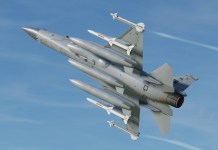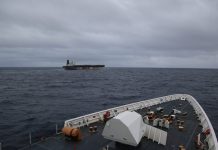Russian S-300 and S-400 air defence systems are going to get a massive boost with the ability to carry more than one type of missile enabling country’s most advanced air defence system a massive advantage against the adversary.
Russia Turning Its Su-34 Bombers Into Dogfighters Similar To F-22 Raptors, Dassault Rafales
The Russian Ministry of Defence has decided to modify the S-400 Triumph and S-300 air defence systems reported Izvestia, citing sources in the military department.
Currently, the S-300 and S-400 can be equipped with only one type of missile, however, after the modification process, the launchers will be able to hit targets simultaneously with several types of missiles – both ultra-long-range and short-range missiles with high manoeuvrability stated the newspaper report.
After the modification, the choice of ammunition will be based on the tactical situation. According to the report, “the improved systems will radically increase the capabilities of the domestic air defence and will allow the creation of echeloned defence to defeat any targets.”
The more advanced S-500 known as 55R6M ‘‘Triumfator-M’’ is expected to join the Russian defence forces in 2021.
The S-300 and S-400 are the most lethal Surface to Air Missile (SAM) systems and are designed to operate in integration, with both serving together to increase effectiveness as part of a much wider integrated Air Defense System (IADS).
The IADS consists of layers of SAMs, ranging from very short-range missiles to very long-range missiles to enhance Russia’s defence. It also incorporates different radars and sensors to detect different kinds of enemy targets.
Lieut. Gen. (ret.) Aytech Bizhev, former deputy commander of the Joint Commonwealth of Independent States Air Defence System, talking to Izvestia said that combining different missiles from one launcher will result in the more rational use of the missiles.
“Such a system is needed in order so that we do not waste expensive ammunition on less important targets,” he said.
“The decision to use one or another type of missile is made depending on the range and class of the air target. Why use long-range ammunition at 50 km when the target can be shot down with a melee missile?
It is also desirable to have different means to destroy a light aircraft or a strategic bomber. Well, when there is a massive raid, missiles of all ranges will come in handy. Technically, such a project is not difficult to implement. The control system is the same, only the cruise engines and warheads are different.”

According to Sputnik, a Russian state-owned news agency, Russian air defence is equipped with at least 125 battalions of S-300s (about 1,500 launchers total) and 69 battalions of S-400s (552 launchers).
The S-300 entered service in 1978 and boasts versatility and accuracy. In 2018, the Ministry of Defense announced the adoption of a new long-range missile 40N6. S-400 along with modified S-300, the range reached 380 km and 35 km in height.
Moreover, the S-400, that entered service in 2007, is capable of detecting and destroying aircraft and cruise and ballistic missiles, while also being capable of eliminating ground-based installations. It can engage targets at a range of up to 400 kilometres, at heights of up to 30 kilometres, along with providing stealth capabilities.
Alexander Gorkov, the former head of the anti-aircraft missile forces of the Russian Air Force said in the report that with modernized complexes, even one S-300PM or S-400 anti-aircraft battalion will be able to build an echeloned air defence.
“The air defence group, including anti-aircraft missile troops, performs a dual-task: it covers the object and protects itself,” Gorkov told Izvestia.
“For this, it needs different types of missiles. If the unit receives medium-range ammunition, which can be placed several times more, then it will be able to solve a whole range of tasks. At first, the complexes will destroy targets at distant approaches – up to 400 km. Then build up fire with other missiles with a range of 250 km. And the main power of fire will be concentrated on targets at a distance of up to 150 km.”




